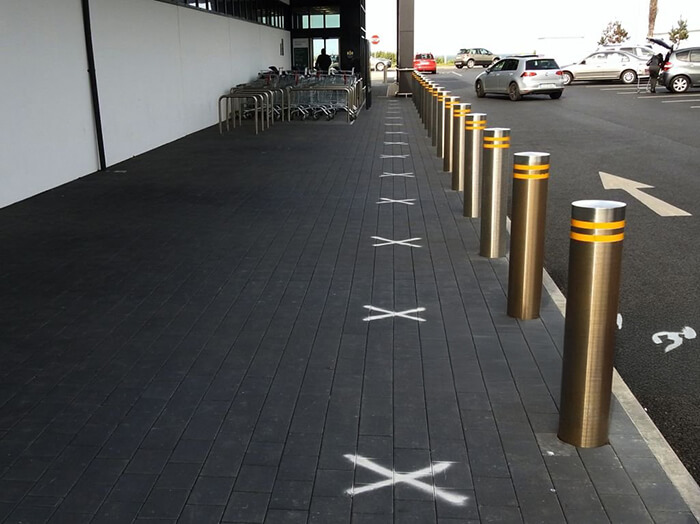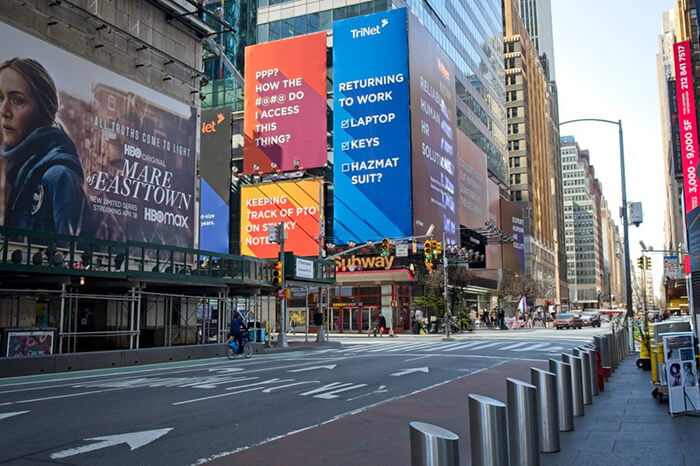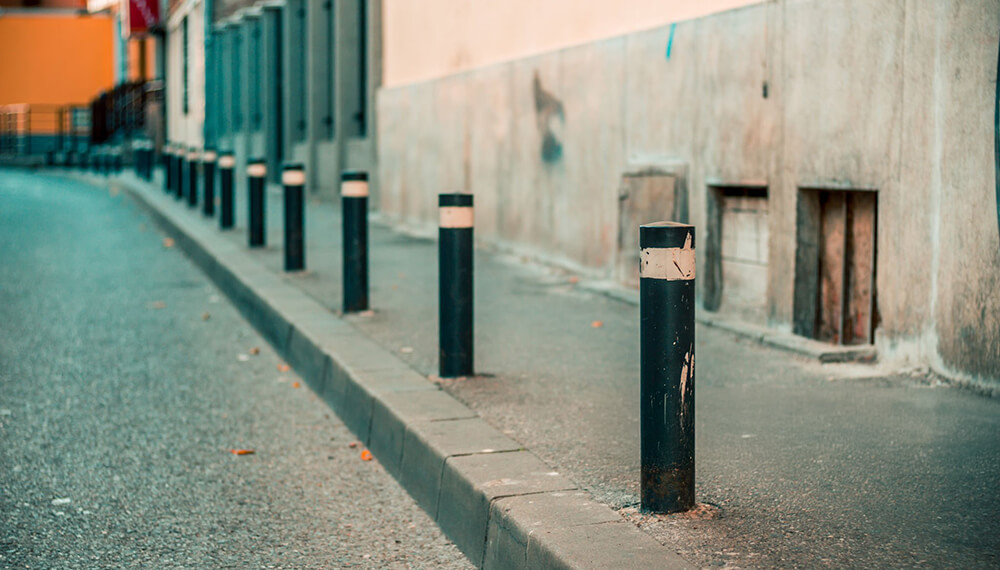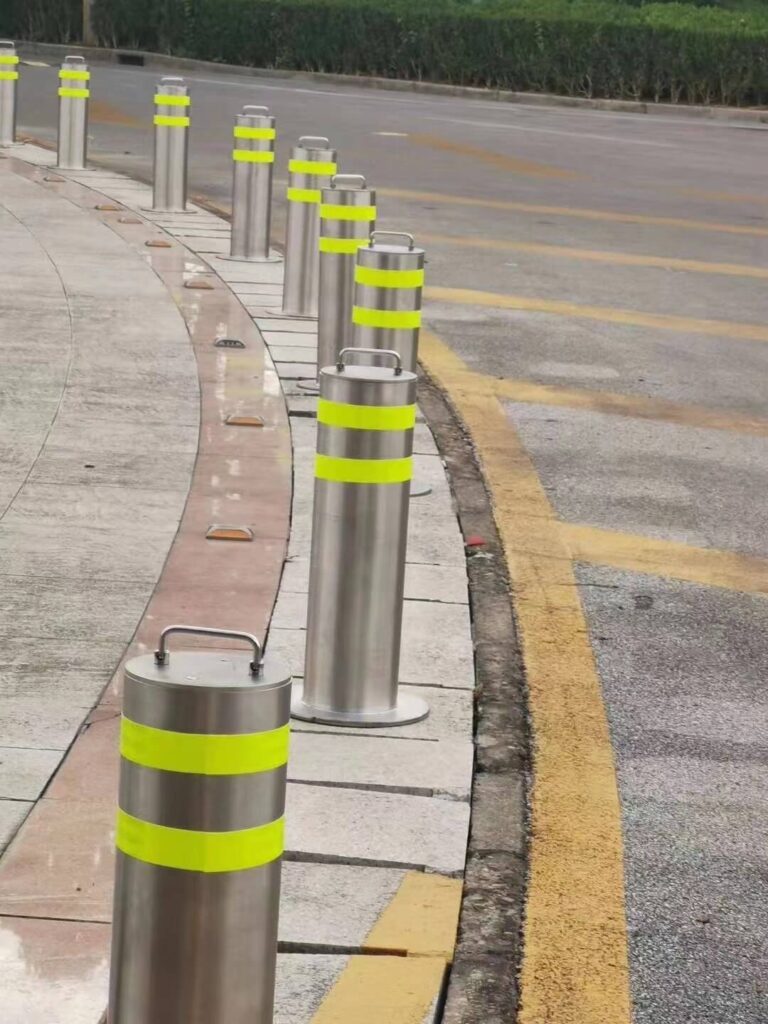Einführung
In today’s rapidly evolving security landscape, the need to protect large commercial properties from various risks has never been more crucial. One of the most effective and versatile tools in safeguarding these spaces is the installation of Poller. Whether it’s shielding pedestrian areas from vehicle collisions or preventing unauthorized vehicle access, Poller serve as a vital line of defense.
Over time, bollards have evolved from simple traffic control posts to essential security features in urban planning. Their ability to integrate seamlessly into modern architectural designs while providing robust protection has made them indispensable in large commercial environments such as shopping malls, office complexes, and industrial parks.
Key reasons why bollards are critical for securing large commercial properties:
- Pedestrian safety: Bollards help create a physical barrier between pedestrian zones and vehicle traffic, ensuring that people can move freely and safely.
- Perimeter protection: Strategically placed bollards prevent vehicles from accessing restricted areas, minimizing the risk of deliberate attacks or accidents.
- Traffic control: In high-traffic areas, bollards play a key role in managing vehicle flow, reducing congestion, and preventing accidents.
- Aesthetic integration: Bollards can be designed to complement the architectural style of commercial properties, providing security without compromising the visual appeal.
The role of bollards in securing large commercial properties extends far beyond simple traffic management. They are an essential part of modern security systems, offering both protection and functionality in large-scale commercial spaces.

What Are Bollards and Why Are They Essential?
Poller are sturdy, short vertical posts that are strategically placed in various environments to control or block vehicle access. These posts serve multiple purposes, from traffic management to pedestrian safety, making them an integral part of security measures in large commercial properties.
Originally, bollards were used to mark the edges of streets or provide mooring points for ships. However, their role has expanded significantly in modern times, especially with the rising need for perimeter security in urban environments.
Key functions of Poller:
- Traffic Management: Bollards are often placed to manage the flow of vehicles, ensuring that cars stay within designated lanes and pedestrians remain safe.
- Vehicle Impact Protection: In areas with heavy pedestrian traffic, bollards act as a protective barrier against accidental or deliberate vehicle collisions.
- Visual Guidance: Bollards can also serve as visual cues for drivers and pedestrians, marking boundaries or restricted zones clearly.
- Aesthetic Elements: Many commercial properties integrate bollards into their design, using them as both functional security tools and decorative elements that enhance the overall appeal of the property.
Different types of Poller:
- Fixed bollards: These are permanently installed and provide long-term protection in areas where vehicle access should always be restricted.
- Removable and retractable bollards: Offering flexibility, these can be temporarily removed or lowered to allow vehicle access for deliveries or emergency situations.
- Crash-resistant bollards: Designed to withstand significant impact, these bollards are used in high-security areas like government buildings, airports, and large commercial complexes.
The strategic use of Poller ensures that commercial properties remain secure without compromising accessibility or aesthetic value. They offer a flexible solution that balances safety, functionality, and design, making them indispensable in today’s security landscape.
Key Benefits of Bollards for Commercial Property Security
When it comes to securing large commercial properties, Poller provide a versatile and effective solution. Their unique design allows them to serve multiple purposes, from protecting pedestrians to ensuring that vehicles adhere to designated pathways. Below are some of the key benefits of installing bollards in commercial properties:
1. Pedestrian and Vehicle Safety
One of the primary roles of Poller is to create a physical barrier between vehicles and pedestrian areas. In high-traffic commercial spaces, this separation is crucial to prevent accidents, particularly in places like:
- Shopping malls: Where heavy pedestrian traffic requires a safe boundary from parking lots or delivery areas.
- Office complexes: Protecting employees and visitors as they move between buildings and parking structures.
- Stadiums and entertainment venues: Ensuring that crowds are kept safe from vehicles, especially during large events.
2. Perimeter Security
Poller play a significant role in protecting the perimeter of large commercial properties. They prevent unauthorized vehicles from entering restricted areas, which is particularly important for locations like:
- Industrial parks: Where valuable equipment and products need protection from vehicle collisions or theft.
- Warehouses: Ensuring that loading docks and storage areas are secure from accidental or intentional vehicular damage.
- Corporate headquarters: Providing an added layer of security at entry points, without obstructing foot traffic.

3. Traffic Control
In large commercial properties, Poller are essential for managing vehicle flow, ensuring that traffic moves in a controlled and safe manner. They are commonly used to:
- Guide vehicles through parking lots, reducing congestion and preventing accidents.
- Block unauthorized access to certain areas, such as emergency lanes or pedestrian zones.
- Mark parking spaces in high-density areas, ensuring that vehicles are parked correctly and that pedestrian routes remain clear.
4. Aesthetic Integration
While Poller serve a vital security function, they can also enhance the visual appeal of commercial properties. Many bollards are designed to blend seamlessly with the architecture, allowing them to provide security without sacrificing aesthetics. For instance:
- Decorative bollards: These can be customized with various finishes and designs to match the surrounding landscape or building style.
- Integrated lighting: Some bollards come equipped with lighting, providing both security and a visually pleasing feature for nighttime safety.
In summary, Poller offer a multifunctional approach to securing commercial properties, ensuring both safety and aesthetic appeal. Their versatility makes them an essential feature in modern security planning.
Types of Bollards Suitable for Large Commercial Properties
Selecting the right type of Poller for a commercial property is crucial for ensuring maximum security and functionality. Different types of bollards offer specific benefits depending on the location, risk factors, and level of protection required. Below are the key types of bollards that are most suitable for large commercial properties.
1. Crash-Resistant Bollards
Designed to withstand high-impact collisions, crash-resistant bollards are essential for locations at risk of deliberate vehicle attacks or accidents. These bollards are often used in high-security areas where protecting people and infrastructure is a top priority. Common locations include:
- Government buildings: Preventing unauthorized vehicle access in sensitive areas.
- Airports and transport hubs: Ensuring that public spaces are safe from vehicle intrusions.
- Large corporate campuses: Adding an extra layer of defense against potential threats.
Crash-resistant bollards are typically made from high-strength materials such as steel and are tested to meet specific crash ratings (e.g., ASTM or K-rating standards).
2. Fixed Bollards
Fixed bollards are permanently installed and provide long-term protection in areas where vehicle access must be continuously restricted. These are ideal for locations where safety is a permanent concern, such as:
- Shopping centers: Preventing vehicles from entering pedestrian walkways or storefront areas.
- Office buildings: Securing main entrances and exits from unauthorized vehicles.
- Schools and universities: Creating safe zones where students and staff can move freely without the risk of vehicle accidents.
The advantage of fixed bollards is that they require minimal maintenance and offer reliable protection over time.
3. Removable and Retractable Bollards
For properties that require flexible access control, removable or retractable bollards are an excellent choice. These bollards can be temporarily removed or lowered to allow vehicle access when needed, making them ideal for:
- Delivery zones: Allowing trucks to enter restricted areas during designated times.
- Event spaces: Providing vehicle access for loading and unloading during events.
- Emergency lanes: Offering flexibility for emergency vehicles to access areas when required.
Retractable bollards can be operated manually or through automated systems, offering convenience for property managers.

4. Decorative Bollards
In addition to providing security, decorative bollards are designed to enhance the aesthetic appeal of commercial properties. These bollards come in various styles, finishes, and materials, making them suitable for:
- High-end retail stores: Where visual appeal is just as important as security.
- Luxury hotels: Ensuring that security measures blend seamlessly with the property’s design.
- Corporate headquarters: Offering a sleek, professional look while maintaining perimeter security.
Decorative bollards can be customized to match the architectural style of the property, ensuring that security features do not compromise the overall aesthetic.
5. Shallow-Mount Bollards
In locations where deep excavation is not feasible, shallow-mount bollards offer a practical solution. These bollards are installed with a shallow foundation, making them ideal for:
- Urban environments: Where underground utilities may limit the depth of installations.
- Historical sites: Protecting the integrity of the site while providing necessary security.
- Downtown commercial districts: Ensuring security without disrupting the flow of pedestrian and vehicle traffic.
Shallow-mount bollards are designed to absorb high-impact collisions while minimizing damage to surrounding infrastructure.
By selecting the right type of Poller for the specific needs of a commercial property, property owners can ensure that they are providing the best possible protection for both people and assets.
Key Considerations When Installing Bollards in Large Commercial Properties
Installing Poller in large commercial properties requires careful planning to ensure they provide optimal security and functionality. Several factors must be considered before selecting and placing bollards, as these will directly impact their effectiveness in protecting both pedestrians and infrastructure.
1. Material Considerations
The material used in Poller can significantly affect their durability, strength, and overall performance. The most common materials include:
- Stainless Steel: Offers excellent corrosion resistance, making it ideal for outdoor applications where bollards are exposed to the elements. It is also easy to maintain and has a sleek, modern appearance.
- Concrete: Known for its strength, concrete bollards are highly durable and can withstand significant impact. However, they are more difficult to install and may not suit every aesthetic preference.
- Cast Iron: This traditional material offers durability and a classic appearance, often used for decorative bollards that also provide security.
- Plastic or Polymer: Often used for removable or temporary bollards, these materials are lightweight and easy to manage but may not offer the same level of security as metal options.
2. Location and Placement
Where Poller are installed is just as important as the type used. Careful planning is necessary to ensure the bollards serve their intended purpose without disrupting the flow of pedestrian or vehicle traffic. Key placement considerations include:
- Pedestrian walkways: Bollards should be placed to prevent vehicles from entering while still allowing free movement for pedestrians and cyclists.
- Building entrances: Installing bollards at entrances can prevent ram-raid attacks while maintaining a welcoming appearance for visitors.
- Parking lots: Strategically placed bollards can help control traffic, prevent accidents, and protect parked vehicles.
- Loading docks: Removable bollards can be used to control access during certain times, offering flexibility for delivery vehicles.
3. Cost Considerations
While Poller provide valuable security, the costs associated with their installation can vary significantly depending on several factors, such as the type of bollard, the material used, and the complexity of the installation. Property managers should consider:
- Initial installation costs: Fixed bollards may be more cost-effective in the long run, while retractable or shallow-mount bollards can be more expensive due to their specialized design.
- Maintenance expenses: Stainless steel bollards may require less maintenance over time compared to materials like concrete or iron, which may corrode or degrade with exposure.
- Custom designs: Decorative bollards can increase costs if they are customized to fit the property’s aesthetic, but they also provide added value by enhancing the visual appeal of the site.
4. Security Needs
The level of security required will dictate the type of Poller that should be installed. Some locations may require high-impact crash-rated bollards, while others may only need decorative or non-crash-resistant bollards for traffic management. Key factors to assess include:
- Risk of vehicle-based attacks: High-risk areas, such as government buildings or large public venues, may need crash-rated bollards.
- Crowd control: In places like stadiums or event spaces, bollards are necessary to manage large crowds and ensure pedestrian safety.
- Traffic flow management: For commercial properties with significant vehicle traffic, bollards help guide vehicles and maintain safe traffic patterns.
5. Compliance with Local Regulations
Before installing Poller, it’s important to ensure that the project complies with local building codes and regulations. These may include:
- Accessibility requirements: Ensuring bollards do not obstruct wheelchair access or violate ADA (Americans with Disabilities Act) regulations.
- Height and spacing guidelines: Depending on the location, there may be regulations governing how far apart bollards must be spaced or the maximum height allowed.
- Environmental impact: In some areas, there may be restrictions on digging or construction that could affect underground utilities or natural landscapes.
By taking these factors into account, property owners can ensure that their Poller installations are effective, compliant, and aligned with both security needs and budgetary considerations.
Real-World Applications of Bollards in Large Commercial Properties
The practical use of Poller in securing large commercial properties is not limited to just protecting pedestrians and controlling vehicle access. Their versatility and strength make them an essential tool for various applications across different sectors. Below are some real-world examples of how Poller are effectively used in different commercial environments.
1. Retail Storefronts
In busy retail environments, Poller are vital for safeguarding customers and employees from potential vehicle collisions. These incidents can happen due to driver error or deliberate attempts such as “ram-raiding,” where a vehicle is used to break into a storefront. Bollards are commonly placed in:
- Mall entrances: To prevent unauthorized vehicle access while allowing pedestrian movement.
- Supermarket parking lots: Ensuring that cars do not drive into areas where shopping carts and pedestrians gather.
- High-end retail stores: Protecting against ram-raid attacks aimed at stealing high-value merchandise.
2. Parking Lots and Garages
Managing traffic in large parking lots can be challenging, especially during peak hours. Poller are used to create safe zones, direct traffic flow, and protect pedestrians from vehicles. They are often found in:
- Parking structures: Preventing vehicles from entering restricted areas or driving off ledges.
- Loading docks: Controlling the entry of delivery trucks and ensuring safe access for personnel.
- Designated pedestrian zones: Bollards help guide foot traffic and create boundaries between cars and pedestrians.
3. Airports and Transport Hubs
Airports, bus stations, and train terminals are high-traffic areas that require both crowd management and security. Poller play a crucial role in keeping these spaces safe by:
- Securing entrances: Preventing unauthorized vehicles from entering terminal areas while allowing people to move freely.
- Protecting pedestrian crossings: Bollards create safe zones for travelers moving between parking lots and terminal buildings.
- Blocking restricted areas: Preventing vehicles from entering areas meant for taxis, buses, or private vehicles.
4. Government Buildings and Public Institutions
High-security areas such as government buildings, courthouses, and police stations often rely on Poller to prevent unauthorized vehicle access. In these environments, bollards serve as a first line of defense against potential vehicle-based attacks, ensuring the safety of both personnel and the public. Applications include:
- Perimeter security: Crash-resistant bollards protect sensitive areas from high-speed vehicle impact.
- Access control: Removable bollards are used to allow authorized vehicles while keeping the area secure during off-hours.
- Crowd management: Bollards help create safe pedestrian walkways in high-traffic zones near government buildings.
5. Sports Stadiums and Entertainment Venues
Large venues that attract significant crowds, such as stadiums and concert halls, require robust security measures to ensure the safety of attendees. Poller help by:
- Securing entrances: Preventing vehicles from driving into crowded areas during events.
- Managing foot traffic: Directing pedestrians to safe zones, away from busy streets or parking lots.
- Protecting temporary structures: Bollards ensure that stages, ticket booths, and vendor stalls are safe from vehicular collisions.
FAQs
- How do bollards enhance security for commercial properties? Bollards provide physical barriers that prevent vehicles from entering pedestrian areas or restricted zones, significantly improving the security of commercial properties.
- What is the difference between crash-resistant and non-crash-resistant bollards? Crash-resistant bollards are designed to withstand vehicle impact, often used in high-security areas, while non-crash-resistant bollards primarily serve to guide traffic or create visual boundaries.
- Where should bollards be installed in large commercial properties? Bollards should be placed at entry points, pedestrian walkways, parking lots, and other areas where vehicle access needs to be restricted or controlled.
- How much does it cost to install bollards? The cost varies depending on the type of bollards, materials used, and installation requirements. Fixed bollards are typically less expensive than retractable or crash-resistant options.
- Can bollards be customized for aesthetic purposes in commercial properties? Yes, decorative bollards can be customized with various finishes, colors, and designs to match the aesthetic of the property while still providing security.
Schlussfolgerung
In securing large commercial properties, Poller play a pivotal role in ensuring safety, managing traffic, and protecting both pedestrians and property from vehicle-related threats. Whether it’s a bustling retail storefront, a high-traffic parking lot, or a government building, strategically placed bollards provide a flexible and robust solution for perimeter security.
From crash-resistant bollards that prevent high-speed vehicle impacts to decorative bollards that blend with architectural designs, these barriers serve multiple purposes, all while maintaining the aesthetic and functional needs of the property. Their versatility, durability, and effectiveness make Poller an indispensable part of modern security planning.
For property owners and managers, understanding the different types of bollards and their applications is crucial to creating a secure environment. By installing the right Poller in the right locations, commercial properties can ensure a higher level of protection without compromising on accessibility or design.



